Ivan Sergei
Mira Str.40-2, 222307, Molodechno Belarus
astroseriv@yandex.by
Abstract: This article presents the results of radio observations made in December 2021. The results of the radio observations are compared with the CAMS video network summaries.
1 INTRODUCTION
The observations were carried out at a private astronomical observatory near the town of Molodechno (Belarus) at the place of Polyani. A 5 element-antenna directed to the west was used, a car FM-receiver was connected to a laptop with as processor an Intel Atom CPU N2600 (1.6 GHz). The software to detect signals is Metan (author – Carol from Poland). Observations are made on the operating frequency 88.6 MHz (the FM radio station near Paris broadcasts on this frequency). The “France Culture” radio broadcast transmitter (100 kW) I use is at about 1550 km from my observatory which has been renewed in 1997.
2 Automatic observations
Three intervals with increased Geminid (GEM, #0004) activity during the period of maximum activity were registered (Figure 1). The first, a brief peak on December 13 from 14h30m to 16h UT, the second from 21h UT on December 13 to 01h UT on December 14, and the third from 05h to 08h UT on December 14. These intervals are within the range of the predicted peak activity according to IMO data (Rendtel, 2021).
The profile of the average hourly activity shows a weak peak on December 2 (Figure 3). It may belong to the peak activity of Phoenicid (#0254). A slight increase in activity on 6–7 December may be due to the maximum activity of Puppid-Velids (#0301). The maxima of the minor showers Monocerotids (MON, #0019) and sigma-Hyrids (HYD ,#0016) are almost invisible in the activity profile and get lost within the sporadic background activity.
The minor shower maxima of Comae Berenicids (COM, #0020) on December 16 and December Leonis Minorids (DLM, #0032) on December 19 cannot be resolved on the profile of the average hourly rates. On December 22, there is a slight increase in the level of average hourly signal activity, which is probably due to the increased Ursids activity (URS, #0015). Also, there is an unidentified weak peak on December 31. For the identification of the peak on December 25, see CAMS data section.
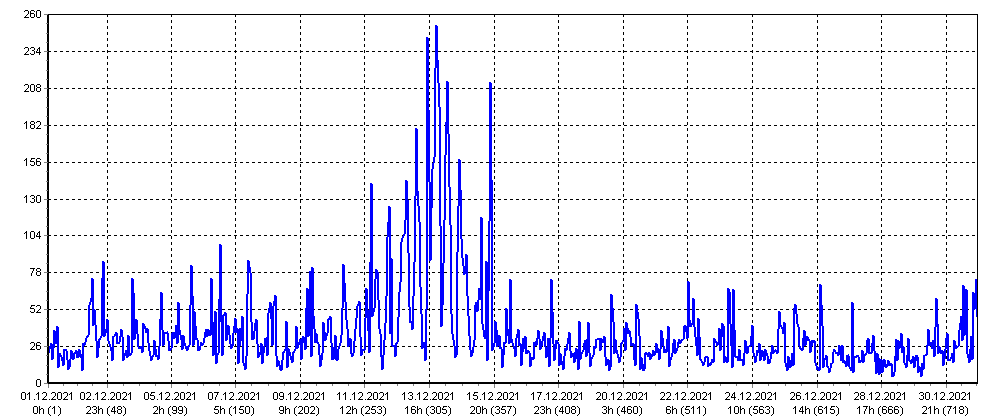
Figure 1 – Radio meteor echo counts recorded at 88.6 MHz during December 2021.
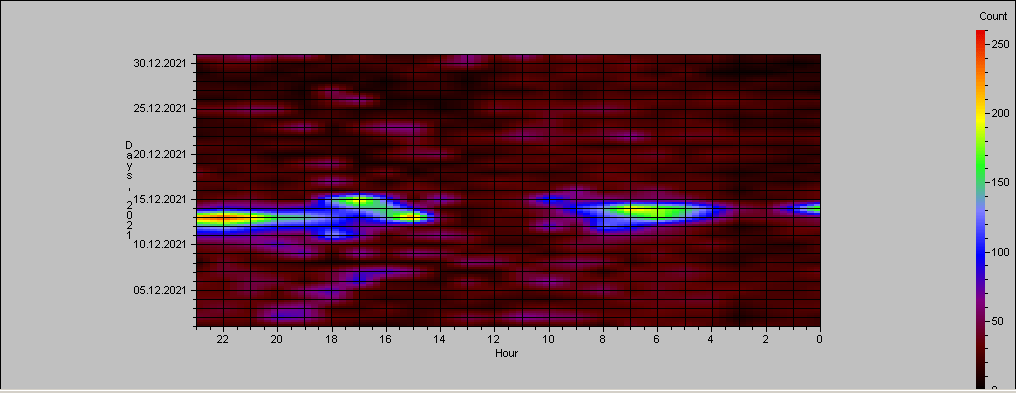
Figure 2 – Heatmap for radio meteor echo counts recorded at 88.6 MHz during December 2021.
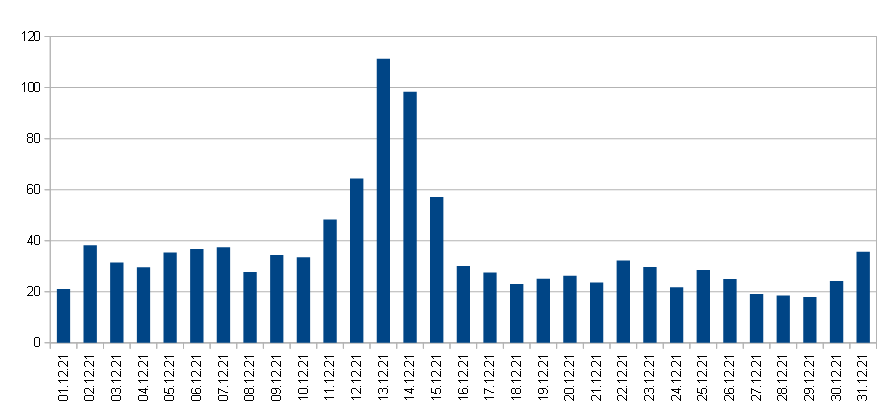
Figure 3 – Average hourly activity of meteoric signals at 88.6 MHz in December 2021.
3 Listening to radio echoes on 88.6 MHz
In order to save observation time and to increase the efficiency of listening to the radio meteor echoes in order to obtain a more complete observation series, I made a modification to the method with the introduction of a definition of “synthetic” hourly rate numbers (Figure 4).
Listening to the radio signals for 10 minutes with extrapolation of the data to 1 hour was done about 3 to 5 times a day. This was done in order to control the level of the hourly rates as well as to distinguish between periods of tropospheric passage and other natural radio interference. The total effective listening time was 110 synthetic hours.
The peak around December 6 can be explained by the Puppid_Velids (PUP, #0301) maximum . The maximum Geminid activity (GEM, #0004) was recorded on December 14–15 at 500–600 signals per hour. The Ursids (URS, #0015) maximum barely appears above the general sporadic background activity, indicating a very short peak activity, we could not locate the exact time of the peak activity). A very weak peak around December 19 may belong to the maximum of the December Leonis Minorids (DLM, #0032) meteor shower. For the identification of the peak on December 28, see CAMS data.
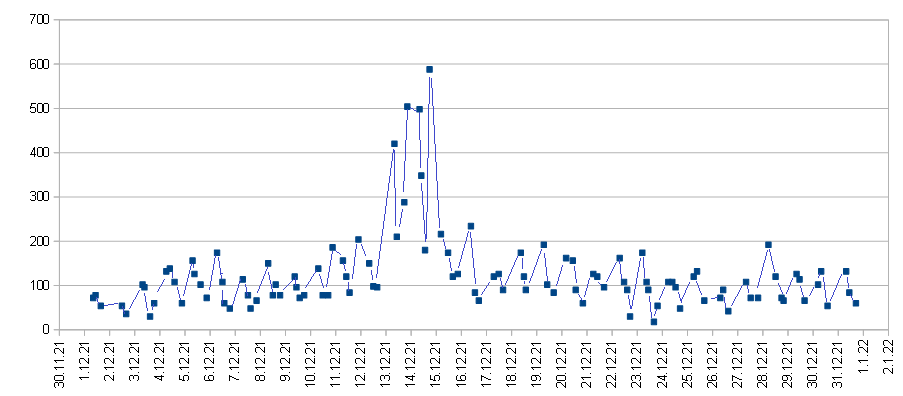
Figure 4 – The result with the calculated hourly numbers of meteor radio echoes by listening to the radio signals for December 2021.
4 Preliminary CAMS Data
Figure 5 shows the total daily activity of meteor orbits obtained by the CAMS video networks data (Jenniskens et al., 2011). For December there is a noticeable correlation between the activity level of sporadic meteors and the activity level of shower meteors. I used the preliminary CAMS data as available on the website on January 3, 2022.
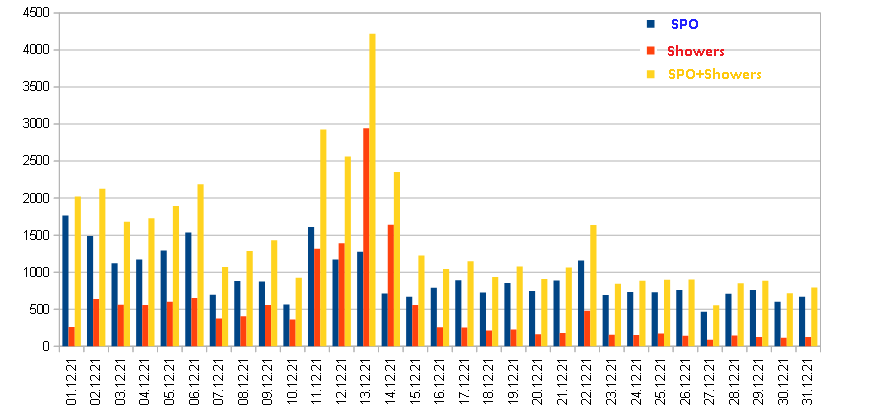
Figure 5 – Daily number of orbits recorded by CAMS video networks in December 2021, yellow bars are the total number of orbits.
In addition to the Geminid peak on December 13, video network data shows the following maxima in number of orbits with varying intensities: December 2, 6, 9, 22, 25, 28. A slight increase in Geminids activity is noticeable on December 2, as well as a nearly three-fold increase in December kappa Draconids (DKD, #0336) activity . On December 6, an increase in the activity of the number of detected showers was registered, as well as an increase in the activity of Geminids, Monocerotids, November Orionids (NOO, #0250). On December 9 the situation is similar to the previous peak, plus some increase in the activity of December alpha Draconids (DAD, #0334), Northern chi Orionids (ORN, #0256). On December 22, there was a burst of Ursids activity. On December 25, there was a noticeable increase in the activity of the December Leonis Minorids (DLM, #0032) and a number of minor showers. This peak is probably the same as the one detected by radio observations with automatic signal detection.
On December 28, there was an increase in Alfa Hydrids (AHY, #0331) activity and an increase in the number of detected showers. This peak corresponds probably to the one detected by radio observations using the method of radio echo.
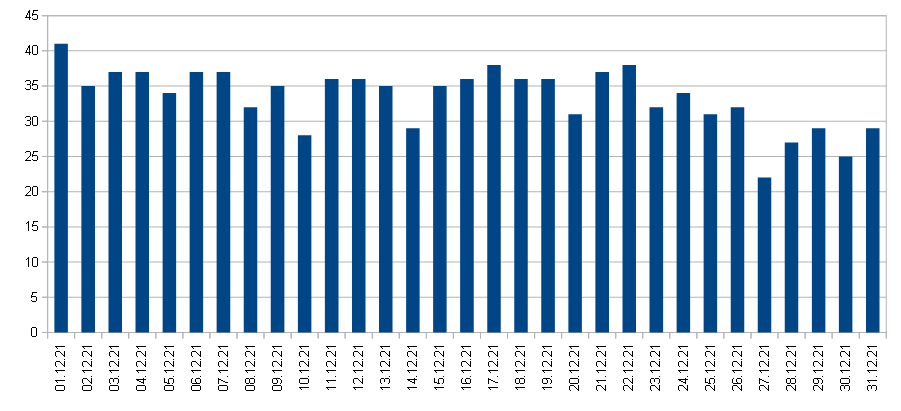
Figure 6 – Numbers of meteor showers detected by CAMS video networks in December 2021.
5 Conclusion
The method of listening to the radio meteor echoes is about 3 times more sensitive than the method using automatic detection of meteor echo signals with music or speech. The maximum of the Geminids occurred on December 14–15, shifted by 1 to 2 days compared to the maximum according to the method of automatic detection and the orbit data obtained by CAMS video networks. This shift in the time of the maximum can be explained by the fact that the smaller and fainter particles cross the Earth 1 to 2 days later than the larger particles. Some dates of peak activity of minor showers or dates with increased numbers of detected shower radiants by CAMS video-networks are in close agreement with data obtained by radio-listening and automatic registration of meteor signals.
Acknowledgment
I would like to thank Sergey Dubrovsky for the software he developed for data analysis and processing of radio observations (software Rameda). I thank Carol from Poland for the Metan software. Thanks to Paul Roggemans for his help in the lay-out and the correction of this article.
References
Jenniskens P., Gural P. S., Dynneson L., Grigsby B. J., Newman K. E., Borden M., Koop M., Holman D. (2011). “CAMS: Cameras for Allsky Meteor Surveillance to establish minor meteor showers”. Icarus, 216, 40–61.
Rendtel J. (2021). “Meteor Shower Calendar”. IMO.

